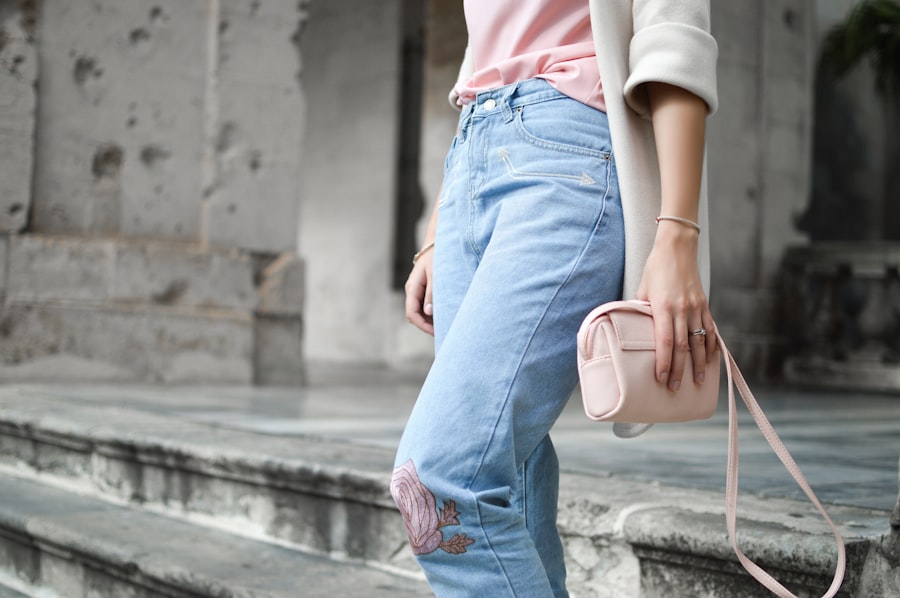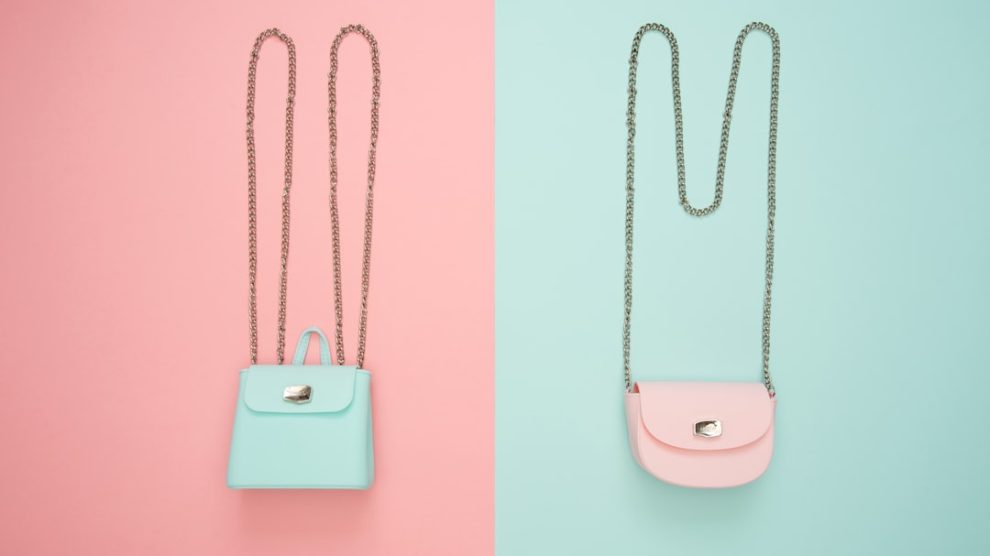Sustainable and ethical fashion businesses are those that prioritize environmental and social responsibility throughout their entire supply chain. These businesses aim to minimize their impact on the environment, promote fair labor practices, and create products that are made to last. In today’s world, where climate change and social inequality are pressing issues, sustainable and ethical fashion has become increasingly important.
Sustainable fashion focuses on reducing the environmental impact of the fashion industry. This includes using eco-friendly materials, implementing sustainable production processes, and promoting recycling and upcycling. Ethical fashion, on the other hand, focuses on ensuring fair wages and safe working conditions for garment workers, as well as promoting gender equality and supporting marginalized communities.
The Growing Demand for Sustainable and Ethical Fashion
The demand for sustainable and ethical fashion has been steadily increasing in recent years. According to a report by McKinsey & Company, the market for sustainable fashion is expected to grow by 20-30% annually over the next five years. This growth can be attributed to several factors.
Firstly, consumers are becoming more conscious of the environmental and social impact of their purchasing decisions. They are increasingly concerned about issues such as climate change, waste pollution, and worker exploitation. As a result, they are seeking out brands that align with their values and offer sustainable and ethical alternatives.
Secondly, there is a growing awareness of the negative consequences of fast fashion. Fast fashion refers to the production of cheap, disposable clothing that is designed to be worn for a short period of time before being discarded. This model has led to overconsumption, excessive waste, and exploitation of workers. As consumers become more educated about these issues, they are actively seeking out alternatives that prioritize sustainability and ethics.
Sustainable and Ethical Fashion Business Models
There are several different business models adopted by sustainable and ethical fashion brands. One common model is the vertically integrated approach, where a brand controls every aspect of the supply chain, from sourcing raw materials to manufacturing and distribution. This allows the brand to have full control over the sustainability and ethical practices at every stage of production.
Another model is the collaborative approach, where brands partner with other organizations or individuals to create sustainable and ethical products. This can involve collaborations with artisans, NGOs, or even other fashion brands. By working together, these brands can leverage each other’s expertise and resources to create products that are both sustainable and ethically made.
A third model is the circular economy approach, which focuses on creating a closed-loop system where products are designed to be recycled or repurposed at the end of their life cycle. This involves using materials that can be easily recycled, implementing take-back programs, and promoting repair and reuse.
Each business model has its own advantages and disadvantages. The vertically integrated approach allows for full control over sustainability and ethics, but it can be costly and time-consuming to implement. The collaborative approach allows for shared resources and expertise, but it can be challenging to align different stakeholders’ interests. The circular economy approach promotes resource efficiency, but it requires a shift in consumer behavior and infrastructure.
The Role of Technology in Sustainable and Ethical Fashion Businesses
Technology plays a crucial role in sustainable and ethical fashion businesses. It enables brands to track and monitor their supply chains, improve production processes, and communicate their sustainability efforts to consumers.
One example of technology used in sustainable fashion is blockchain. Blockchain is a decentralized digital ledger that allows for transparent and secure transactions. It can be used to track the entire supply chain of a garment, from the sourcing of raw materials to the manufacturing process and distribution. This ensures that every step of the production process is transparent and accountable.
Another example is 3D printing. 3D printing allows for on-demand production, which reduces waste and overproduction. It also enables brands to create customized products, reducing the need for mass production and minimizing the environmental impact.
Additionally, technology can be used to improve production processes and reduce waste. For example, artificial intelligence can be used to optimize production schedules and minimize energy consumption. Robotics can be used to automate repetitive tasks, reducing the need for manual labor and improving worker safety.
The Importance of Transparency in Sustainable and Ethical Fashion
Transparency is a key aspect of sustainable and ethical fashion. It refers to the openness and accountability of brands in disclosing information about their supply chains, production processes, and social and environmental impact.
Transparency is important for several reasons. Firstly, it allows consumers to make informed purchasing decisions. By providing information about the materials used, the manufacturing process, and the working conditions of garment workers, brands enable consumers to choose products that align with their values.
Secondly, transparency promotes accountability. By disclosing information about their practices, brands are held accountable for their actions. This encourages them to improve their sustainability and ethical practices and ensures that they are not engaging in greenwashing or unethical behavior.
Finally, transparency fosters trust between brands and consumers. When brands are open and honest about their practices, consumers are more likely to trust them and develop a long-term relationship with the brand.
Strategies for Marketing Sustainable and Ethical Fashion Brands

Marketing sustainable and ethical fashion brands requires a different approach compared to traditional fashion brands. Here are some strategies that can be effective in promoting sustainable and ethical fashion:
1. Storytelling: Sustainable and ethical fashion brands often have compelling stories behind their products. By telling these stories, brands can connect with consumers on an emotional level and create a sense of purpose and meaning.
2. Education: Many consumers are still unaware of the environmental and social impact of the fashion industry. By educating consumers about these issues, brands can raise awareness and encourage more sustainable and ethical purchasing decisions.
3. Collaboration: Collaborating with influencers, bloggers, and other brands can help increase brand visibility and reach a wider audience. By partnering with individuals or organizations that share similar values, brands can amplify their message and attract new customers.
4. Social media: Social media platforms provide a powerful tool for sustainable and ethical fashion brands to connect with consumers. By sharing behind-the-scenes content, showcasing sustainable practices, and engaging with followers, brands can build a loyal community of supporters.
Collaborations and Partnerships in Sustainable and Ethical Fashion Businesses
Collaborations and partnerships play a crucial role in the success of sustainable and ethical fashion businesses. By working together, brands can leverage each other’s resources, expertise, and networks to create innovative and impactful products.
One example of a successful collaboration is the partnership between Patagonia and The North Face. These two outdoor apparel brands joined forces to create the Common Threads Initiative, a program that encourages consumers to reduce consumption, repair their clothing, recycle old garments, and buy used products. By collaborating, these brands were able to amplify their message and create a movement towards more sustainable consumption.
Another example is the partnership between Stella McCartney and Adidas. Stella McCartney is known for her commitment to sustainability, while Adidas is a global sportswear brand. By collaborating, they were able to create a line of sustainable sportswear that combines Stella McCartney’s design aesthetic with Adidas’ technical expertise. This partnership allowed both brands to reach new customers and promote sustainable fashion in the sports industry.
The Benefits of Investing in Sustainable and Ethical Fashion Businesses
Investing in sustainable and ethical fashion businesses can offer several advantages. Firstly, these businesses are well-positioned to capitalize on the growing demand for sustainable products. As more consumers prioritize sustainability and ethics in their purchasing decisions, brands that align with these values are likely to see increased sales and market share.
Secondly, sustainable and ethical fashion businesses often have strong brand loyalty and customer engagement. By prioritizing transparency, accountability, and social responsibility, these brands are able to build trust and develop long-term relationships with their customers. This can lead to repeat purchases, positive word-of-mouth, and increased brand awareness.
Finally, investing in sustainable and ethical fashion businesses can have a positive impact on the environment and society. By supporting brands that prioritize sustainability and ethics, investors can contribute to the transition towards a more sustainable and equitable fashion industry.
Make Extra Money: Opportunities in Sustainable and Ethical Fashion Businesses
There are several opportunities to make extra money in sustainable and ethical fashion businesses. Here are a few examples:
1. Reselling: With the rise of sustainable fashion, there is a growing market for second-hand clothing. By reselling pre-loved garments, individuals can make extra money while promoting sustainability and reducing waste.
2. Upcycling: Upcycling involves transforming old or discarded materials into new products of higher value. By upcycling clothing or accessories, individuals can create unique and sustainable products that can be sold or gifted.
3. Consulting: As more brands seek to become more sustainable and ethical, there is a demand for consultants who can provide guidance and expertise in these areas. Individuals with knowledge and experience in sustainable fashion can offer consulting services to brands looking to improve their practices.
4. Online platforms: There are several online platforms that connect sustainable fashion brands with consumers. By starting an online store or becoming an affiliate marketer for these platforms, individuals can earn commissions on sales made through their referral links.
The Future of Sustainable and Ethical Fashion Businesses
The future of sustainable and ethical fashion businesses looks promising. As consumers become more conscious of the environmental and social impact of their purchasing decisions, the demand for sustainable products is expected to continue growing.
In order to thrive in this changing landscape, sustainable and ethical fashion brands will need to continue innovating and adapting their business models. This includes embracing new technologies, collaborating with other brands and organizations, and prioritizing transparency and accountability.
Ultimately, sustainable and ethical fashion is not just a trend, but a necessary shift towards a more sustainable and equitable fashion industry. By supporting and investing in these businesses, individuals can contribute to a more sustainable future for the fashion industry and the planet as a whole.









Add Comment